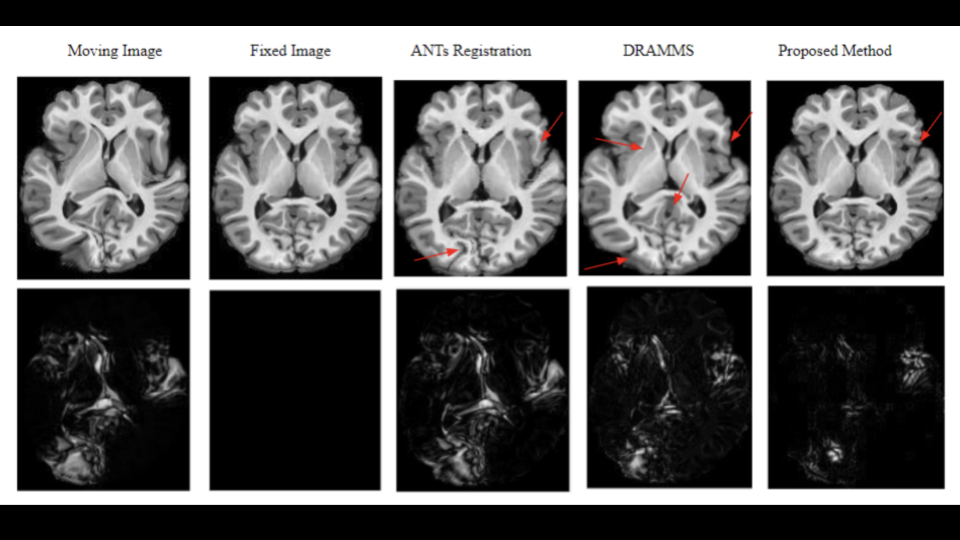A method for image registration via broken geodesics
Anatomical variabilities seen in longitudinal data or inter-subject data is usually described by the underlying deformation, captured by non-rigid registration of these images. Stationary Velocity Field (SVF) based non-rigid registration algorithms are widely used for registration. However, these methods cover only a limited degree of deformations. We address this limitation and define an approximate metric space for the manifold of diffeomorphisms. We propose a method to break down the large deformation into finite set of small sequential deformations. This results in a broken geodesic path on and its length now forms an approximate registration metric. We illustrate the method using a simple, intensity-based, log-demon implementation. Validation results of the proposed method show that it can capture large and complex deformations while producing qualitatively better results than state-of-the-art methods. The results also demonstrate that the proposed registration metric is a good indicator of the degree of deformation.
To learn or not to learn features for deformable registration?
Feature-based registration has been popular with a variety of features ranging from voxel intensity to Self-Similarity Context (SSC). In this paper, we examine the question of how features learnt using various Deep Learning (DL) frameworks can be used for deformable registration and whether this feature learning is necessary or not. We investigate the use of features learned by different DL methods in the current state-of-the-art discrete registration framework and analyze its performance on 2 publicly available datasets. We draw insights about the type of DL framework useful for feature learning. We consider the impact, if any, of the complexity of different DL models and brain parcellation methods on the performance of discrete registration. Our results indicate that the registration performance with DL features and SSC are comparable and stable across datasets whereas this does not hold for low level features. This shows that when handcrafted features are designed based on good insights into the problem at hand, they perform better or are comparable to features learnt using deep learning framework.
